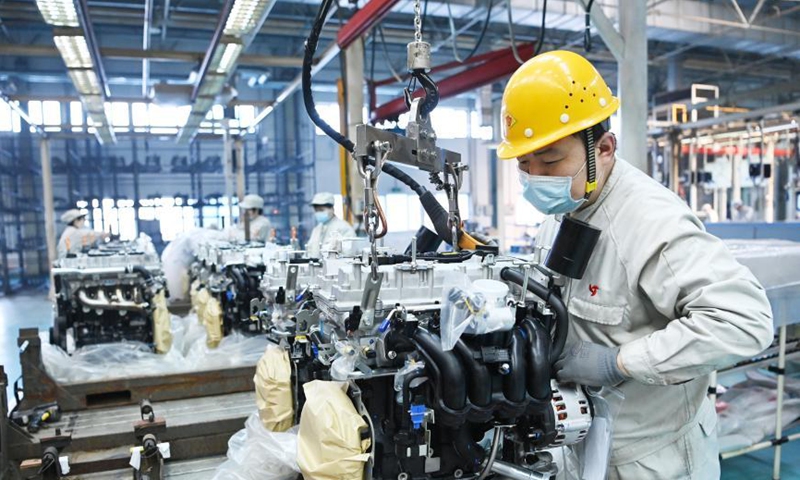
If one visits the market and the malls trying to see the economy, product range and prices and how inflation is affecting the place , one finds some sort of contradiction taking place. And it’s a global phenomenon. The two big American Mall Chain stores Macy and Nordstorm have reported lower profits for the quarter passed and have given dismissal future earnings. Though one can see some increase in travels and footfalls , the real pick up is missing as customers were hit by rising inflation and in the US the gas /petrol prices hit 6 dollar a gallon (some time back after reversing) which was almost an all time high in recent times.
A friend in the US said to me that US malls are still filled with ‘Make in China’ brands despite the recent tensions between the two countries, reflecting the strong commercial coupling-attachment between the two countries.
The Chinese have worked hard to develop a proper strategy for their ‘make in China’ global factory. They have not tried to run behind everything but have chosen wisely for the global consumer market. Let’s take a quick look at Chinese data over the years.
China has without doubt become a major global player in trade as a supplier and as a market. China became the world’s largest exporter of goods in 2009, and the largest trading nation in goods in 2013. China’s share of global goods trade increased from 1.9 percent in 2000 to 11.4 percent in 2017. In an analysis of 186 countries, China is the largest export destination for 33 countries and the largest source of imports for 65. However, trade exposure to China varies substantially by region and sector. China has a disproportionately high impact on specific regions (particularly those close by) and sectors, notably those with globally integrated technology chains, and resource-exporting sectors for which China is a big market. China’s global scale in services trade is not as significant as in goods. China became the world’s fifth-largest exporter of services with $227 billion of exports in 2017, triple the value in 2005. China also imported $468 billion services in 2017, making it the second-largest services importer in the world. However, China’s share of global services trade is 6.4 percent, about half that of goods trade.
No doubt, China is the world’s largest manufacturer in terms of output and has gained a reputation as the “world’s factory” soon after its accession to the World Trade Organization (WTO) in 2001. Lured by cheap labour, China’s commitment to opening up its economy, and low tariff access to Western markets, all due to its WTO entry, foreign firms and investors rushed to do business in the world’s most populous country in the new millennium.
Aided by state investment, China has since become a world leader in the manufacture of steel, car parts, chemicals, electronics, and robotics.
However we are not focusing on high value, technology or industrial related trade in this post. We wish to highlight the smaller things that China makes and exports all over the world which can be also seen in international Mall chains and big shops.
The Chinese goods for the common man:
Recent events have illustrated the importance of diversifying one’s brand’s supply chain, but China will likely remain a dominant force in global manufacturing. Here are some of the diverse product categories where China continues to play a major role. They are as follows:- 1. Cleaning products 2. Athleisure 3. Cooking products 4. Home Appliances 5. Artificial Flowers 6. Home Gyms 7. Clothing 8. Furniture 9. Child care 10. Arts and Crafts.
None of these products require rocket science. Most of these products are household day to day items that the world requires. Its really interesting and with all credits to the Chinese to achieve this simple yet challenging strategy. Under the home appliances sector it exports from HVAC equipment to washing machines, air purifiers, sterilizing washing machines and automatic hand washers. and refrigerators, and produces millions of units for both domestic use and exports, with billions of dollars worth of goods exported each year.
A report from Quartz reveals that the U.S. imported $392 million worth of plastic artificial flowers and $443 million worth of non-plastic artificial flowers from China in 2018. That represents 97 percent of all imports in this product category.
According to Statista, in 2018 China accounted for 37.6 percent of the global textile market. While there are many other countries that also produce textiles, China continues to be an attractive option
World’s Top Exports reports that furniture product exports exceeded $27 billion in 2019. In 2018, 95 percent of U.S. baby stroller imports came from China, with an estimated value of $294 million. While the rest of the world isn’t as heavily reliant on China for its baby strollers, the country is still responsible for 58 percent of global imports.
The Chinese Model:
China has learnt a few tricks when it has grabbed the world markets. First it has expertise in packaging technology. All the products coming from China will bear a glossy outward shine that gives an impression of a world class product. There is no room for complacency here which is important for a GLOBAL EXPORTER.
Second it has also used International and English names that are similar sounding to many internatipoanal brands for marketing its products. We on our own part have been cheated many times reading the labels but when going inside ( tks to amazon for showing country of origin these days ) we find that its a make in China product.
And ofcourse the cheap labour coupled with government subsidies, and easy fund availability have all worked in its favour to become a global exporter of products.
The Indian Scenario and suggestions:
India did well to start the PLI scheme which has given some sort of boost to Indian exports. Still looking at the immense potential and the current disenchantment of western nations with China, India has a good opportunity at hand to dive deep into these sectors. We need to identify Narayan Murthy who did it for the Indian software market. The government had to open up large export oriented parks in main locations like Kanpur, Surat, Rajkot, Sambhajinagar, Indore, Jaipur , Gwalior, Mysore, Coimbatore etc for utilising local talent and expertise. We can pick any two or three sectors from the list given below and can start working on that. This is a very much doable task especially in clothing , textiles, Kitchen appliances , leather goods, travelling Bags etc.
Conclusion:
So far the world has given a walk over to China to be the manufacturing factory of the world. But the manner in which global events are happening there are big changes that can be seen coming in the future. This is India;s opportunity and we must walk some extra miles to achieve the targets. Pm Modi and the government has given the Atma Nirbhar BHarat slogan and have accom;lished it quite successfully. However we are still nowhere in terms of exports and matching Chinese. A start can be made to capture some of the products where we have good resources as well as expertise. What is needed is a political will and initiative to make India also a global manufacturing place.
There is no problem in developing a little China inside India atleast as a manufacturing hub, the way China has copied and imitated many things from the western nations.


